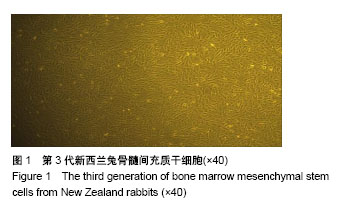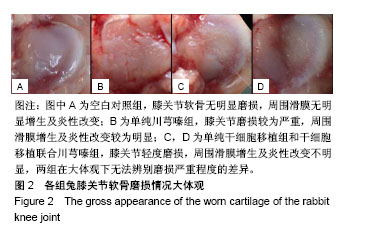| [1] Duckham RL, Masud T, Taylor R, et al. Randomised controlled trial of the effectiveness of community group and home-based falls prevention exercise programmes on bone health in older people: the ProAct65+ bone study. Age Ageing. 2015;44(4):573-579.[2] Bonaiuti D, Arioli G, Diana G, et al. SIMFER Rehabilitation treatment guidelines in postmenopausal and senile osteoporosis. Eura Medicophys. 2005;41(4):315-337.[3] 中华医学会骨科学分会.骨关节炎诊治指南(2007年版)[J].中国临床医生, 2008,36(1):28-30.[4] 王万铁,徐正衸,林丽娜,等.川芎嗪对肝缺血-再灌注损伤家兔血浆TXA2/PGI2水平的影响[J].中国临床药学杂志, 1999,8(3):167-170.[5] 胡建中,罗承耀,康明,等.川芎嗪关节腔内注射对膝骨关节炎的治疗作用[J].中南大学学报(医学版),2006,31(4):591-594. [6] 罗丹.川芎嗪联合来氟米特对Ⅱ型胶原诱导性关节炎大鼠的治疗作用及其机理研究[D]. 北京:北京中医药大学,2014.[7] Loeser RF, Goldring SR, Scanzello CR, et al. Osteoarthritis: a disease of the joint as an organ. Arthritis Rheum. 2012;64(6):1697-1707.[8] Park DY, Jin LH, Min BH, et al. Subchondral bone scan uptake correlates with articular cartilage degeneration in osteoarthritic knees. Int J Rheum Dis. 2017;20(10):1393-1402.[9] Thomas NP, Li P, Fleming BC, et al. Attenuation of cartilage pathogenesis in post-traumatic osteoarthritis (PTOA) in mice by blocking the stromal derived factor 1 receptor (CXCR4) with the specific inhibitor, AMD3100. J Orthop Res. 2015;33(7):1071-1078.[10] Kuang B, Dai J, Wang QY, et al. Combined degenerative and regenerative remodeling responses of the mandibular condyle to experimentally induced disordered occlusion. Am J Orthod Dentofacial Orthop. 2013;143(1):69-76.[11] 谢平金,史桐雨,梁贵洪,等.川芎嗪对膝骨性关节炎大鼠软骨BMP-2、Smad1及BMP-2mRNA、Smad1mRNA表达的影响[J].中国骨质疏松杂志,2018,24(6):727-731.[12] 方斌,刘文刚,赵自明,等. 参麦注射液关节内注射治疗家兔膝骨关节炎的实验研究[J]. 风湿病与关节炎,2013,2(8):27-30.[13] 聂林.骨关节炎的动物模型[J].中华实验外科杂志, 1990,7(2):96-97.[14] Okazaki R, Sakai A, Ootsuyama A, et al. Apoptosis and p53 expression in chondrocytes relate to degeneration in articular cartilage of immobilized knee joints. J Rheumatol. 2003;30(3):559-566.[15] 江捍平,王大平. 骨关节炎动物模型[J]. 中国现代医学杂志, 2004,14(6): 153-154.[16] Perilli E, Le V, Ma B, et al. Detecting early bone changes using in vivo micro-CT in ovariectomized, zoledronic acid-treated, and sham-operated rats. Osteoporos Int. 2010;21(8):1371-1382.[17] Zhu S, Chen K, Lan Y, et al. Alendronate protects against articular cartilage erosion by inhibiting subchondral bone loss in ovariectomized rats. Bone. 2013;53(2):340-349.[18] Bellido M, Lugo L, Roman-Blas JA, et al. Subchondral bone microstructural damage by increased remodelling aggravates experimental osteoarthritis preceded by osteoporosis. Arthritis Res Ther. 2010;12(4):R152.[19] 彭冰,胡正国,宋才渊,等.小鼠骨质疏松合并骨性关节炎模型的建立及评价[J].广西中医药大学学报,2015,18(2):8-10.[20] Bahat-Stroomza M, Barhum Y, Levy YS, et al. Induction of adult human bone marrow mesenchymal stromal cells into functional astrocyte-like cells: potential for restorative treatment in Parkinson's disease. J Mol Neurosci. 2009;39(1-2):199-210.[21] Kaka GR, Tiraihi T, Delshad A, et al. In vitro differentiation of bone marrow stromal cells into oligodendrocyte-like cells using triiodothyronine as inducer. Int J Neurosci. 2012;122(5):237-247.[22] 周斌,樊粤光.骨髓间充质干细胞与软骨修复研究进展[J].中国中医骨伤科杂志,2007,15(10):67-69.[23] Ruiz-Ibán MÁ, Díaz-Heredia J, García-Gómez I, et al. The effect of the addition of adipose-derived mesenchymal stem cells to a meniscal repair in the avascular zone: an experimental study in rabbits. Arthroscopy. 2011;27(12):1688-1696.[24] Friedenstein AJ, Chailakhyan RK, Gerasimov UV. Bone marrow osteogenic stem cells: in vitro cultivation and transplantation in diffusion chambers. Cell Tissue Kinet. 1987;20(3):263-272.[25] Fortier LA1, Nixon AJ, Williams J, et al. Isolation and chondrocytic differentiation of equine bone marrow-derived mesenchymal stem cells. Am J Vet Res. 1998;59(9):1182-1187.[26] Im GI, Kim DY, Shin JH, et al. Repair of cartilage defect in the rabbit with cultured mesenchymal stem cells from bone marrow. J Bone Joint Surg Br. 2001;83(2):289-294.[27] 田园,李运鹏,韩若东.川芎嗪对大鼠脑缺血再灌注后细胞凋亡及caspase 12表达的影响[J]. 临床和实验医学杂志, 2014, 13(1):16-19.[28] 吕红斌,徐大启,胡建中,等.川芎嗪关节腔内注射治疗兔骨关节炎模型的研究[J].中国医师杂志,2007,9(9):1163-1165.[29] 付长龙,梅阳阳,林洁,等.川芎嗪干预类风湿关节炎的机制探讨[J].风湿病与关节炎,2016,5(9):45-47.[30] 李应池,王晓霞,邱桐,等.川芎嗪对鼠骨关节炎关节软骨MMP-1、TIMP-1表达的影响[J]. 中华中医药学刊, 2011,29(9):2120-2124.[31] 胡建中,罗承耀,康明,等.川芎嗪关节腔内注射对膝骨关节炎的治疗作用[J].中南大学学报(医学版),2006,31(4):591-594.[32] 罗森.川芎嗪注射液治疗膝骨性关节炎的临床观察[J].内蒙古中医药, 2018,15(8):96-97.[33] 张利省.盐酸川芎嗪注射液联合美洛昔康对类风湿性关节炎患者症状改善及日常生活能力的影响[J].中国药物经济学,2017,12(9):93-95. |
.jpg)



.jpg)